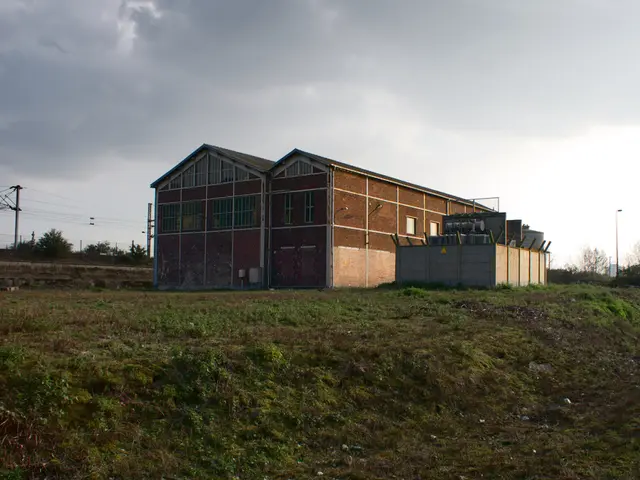Purchasing a home in a recently developed area can save up to £50,000, according to Halifax's latest report.
UK Property Market: New Towns and House Price Trends
The UK property market has seen a significant shift over the past year, with the average price of a property reaching £293,000, a 2.3% increase from the previous year. However, the growth varies across regions, with some new towns witnessing remarkable price surges.
In England, the North West saw the fastest annual house price growth, with prices increasing by 4.6%. Conversely, the South West recorded the lowest annual inflation, with prices rising by just 0.8%. The average house price in London now stands at a staggering £531,212.
In Scotland, average house prices increased by 5.4%, with the average property now costing £200,000. Meanwhile, in Yorkshire and the Humber, house prices increased by 4.4%.
The lower house prices in new towns can be attributed to their planned development nature, location relative to economic centers, and historical housing stock characteristics. New towns, often built with standardized, functional housing to address post-war housing shortages, may lack the architectural distinctiveness and desirability of older, established towns.
Many new towns were situated away from traditional economic hubs and established transport links, which can also impact their property prices. For instance, the most expensive UK cities like Cambridge and Oxford are university and economic centers with high demand, while new towns may lack such strong employment or cultural attractions.
The housing stock and amenities in new towns also play a significant role. Older towns often have a mix of historic and varied housing, sometimes with better amenities or in better-maintained neighborhoods. New towns may have initially offered affordable housing but often with less premium infrastructure or prestige, keeping prices lower compared to shopping or cultural centers.
The UK housing market shows that places with higher buyer demand and fewer available properties drive prices up. New towns tend to have more balanced markets with more supply relative to demand, reducing price pressure. Areas undergoing regeneration (like parts of London) can see rising prices due to investments in transport and amenities, but many new towns have yet to experience such uplift, thus holding house prices lower.
Crawley in West Sussex has seen a property price surge of 543% since 1994, with the average price of an average house now standing at £409,836. Hemel Hempstead, another new town, has seen an average house price increase of 618% from its inception, with the average price of an average house now at £436,986.
In Northern Ireland, Craigavon has seen an average house price increase of 524% since its inception, with the average price of an average house now at £194,560. House prices in Northern Ireland jumped 6.4% over the past year, reaching an average of £185,000.
In Wales, house prices rose 3.5% to reach an average of £223,000. The West Midlands saw a 2.6% increase in house prices. The average price of a property in a new town is £300,656, while the UK average house price is £346,995.
[1] Source [2] Source [3] Source [4] Source
- The growth in the UK property market, particularly in new towns, offers a unique opportunity for personal finance enthusiasts interested in investing in property.
- For those following personal-finance newsletters, the differential house price trends across various regions, such as the North West and the South West, provide valuable insights into personal finance and the housing-market.
- Finance experts might find the comparison between the average house price in London and average prices in new towns an interesting case study on the impact of location and infrastructure on real-estate values.
- Investors looking for a balance between affordability and growth potential may consider new towns in regions like Yorkshire and the Humber, Northern Ireland, or Wales, as evidenced by the significant price increases seen in Crawley, Hemel Hempstead, and Craigavon.




